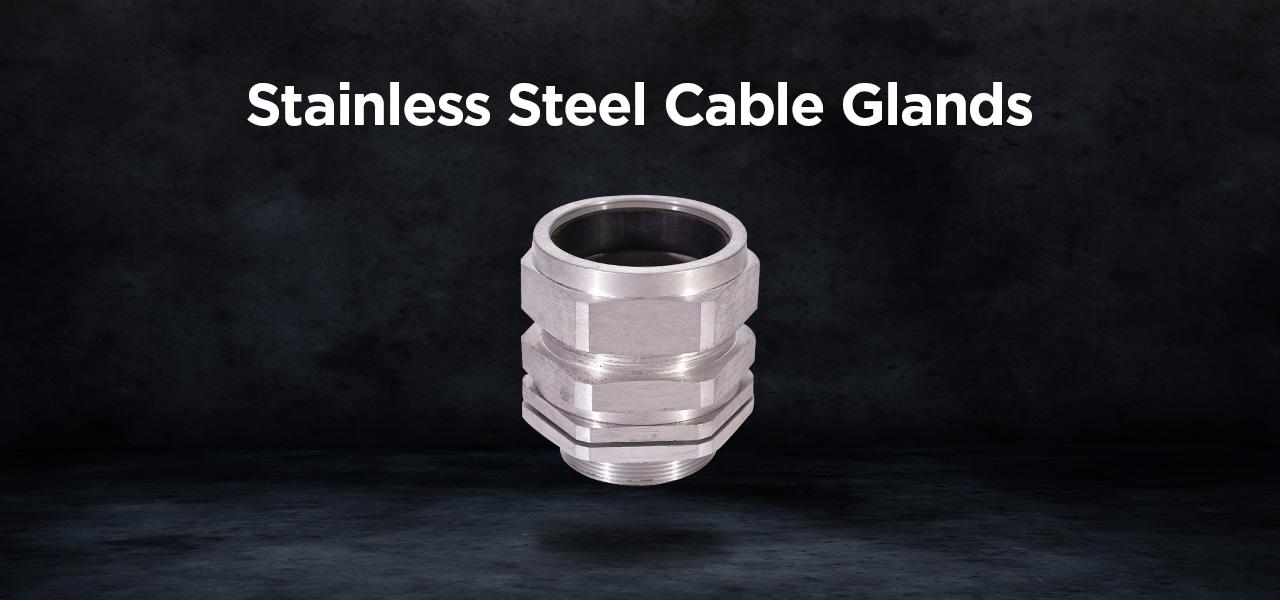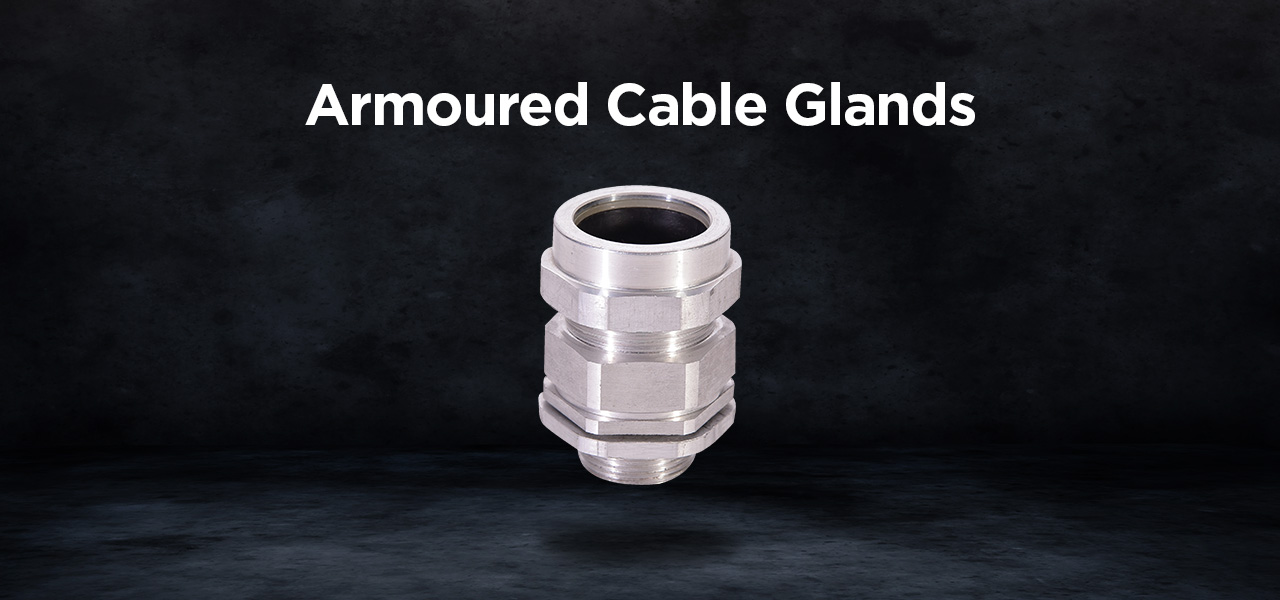|
Getting your Trinity Audio player ready...
|
As a renowned manufacturer in the metal industry, Atlas Metal recognises the significance of quality and reliable cable glands in industrial applications. In this blog, you will gain detailed knowledge about cable glands, including their types, installation, and maintenance.
Industrial Cable glands are vital for providing secure connections and protecting cables. Whether in hazardous environments or heavy-duty applications, industrial cable glands ensure optimal electrical installations by offering essential protection. They are used in industries like railways, oil and gas, and mining, providing crucial protection and reliable connectivity for a wide range of applications.
Now, let’s explore the different types of industrial cable glands.
Types of Industrial Cable Glands
Let us learn about the different types of earthing bars that are used based on specific requirements.
1. Armoured Cable Glands
Armoured cable glands are designed to use with armoured cables. These cable glands provide secure and reliable connections while offering enhanced protection against mechanical strain, ensuring the integrity of the cable in demanding environments.
2. Metal Cable Glands
Constructed from durable metals such as brass or aluminium, metal cable glands offer robustness and longevity. They provide excellent protection against environmental factors and are suitable for a wide range of industrial applications.
3. Stainless Steel Cable Glands
Stainless steel ss cable glands are ideal for harsh and corrosive environments. They offer exceptional resistance to corrosion, which makes them highly durable and suitable for industries such as marine, oil and gas, and chemical processing.
4. Brass Cable Glands
Known for their excellent electrical conductivity and resistance to corrosion, brass cable glands are widely used in various industrial settings. They offer reliable sealing and secure connections, making them a popular choice for various applications.
5. Plastic Cable Glands
Made from high-quality engineering plastics, these cable glands offer cost-effective solutions for non-corrosive environments. They are lightweight, easy to install, and provide good sealing properties, making them suitable for a range of industrial and commercial applications.
While choosing an earthing bar, consider the following criteria for optimal performance:
1. Polyamide
Durable and chemically resistant material commonly used for industrial cable glands.
2. PVC
Versatile material providing good electrical insulation for industrial cable glands.
3. TPE
Flexible and weather-resistant material used for reliable sealing in cable glands.
4. Rubber
Offers excellent sealing properties and protection against moisture and environmental elements in cable glands.
5. Metal Alloys
Robust and corrosion-resistant materials like brass, aluminium, or stainless steel are mainly used for industrial cable gland applications.
Consider the following key criteria while choosing industrial cable glands to ensure optimal performance, safety, and longevity of electrical installations.
1. Cable Diameter and Type
Accurate measurement of the cable diameter is essential for selecting the appropriate gland size. Consider the cable type as well, such as armoured, unarmored, or braided, to ensure a secure and proper fit. Atlas Metal advises carefully matching the cable dimensions to the compatible cable gland, ensuring effective sealing and strain relief.
2. Operating Temperature and Pressure
Take into account the expected operating temperature and pressure conditions in your application. Different cable glands are designed to withstand varying temperature ranges and pressure levels. Atlas Metal recommends choosing cable glands that are compatible with the anticipated environmental conditions to ensure reliable performance and avoid premature failure.
3. Environmental Conditions
Evaluate the surrounding environment where the cable glands will be installed. Factors such as moisture, dust, chemicals, or extreme weather conditions should be considered. Atlas Metal emphasises selecting cable glands with appropriate IP (Ingress Protection) ratings and materials that offer suitable resistance ensuring reliable protection against environmental elements.
4. Systematic Classification of Hazardous Areas
In applications involving hazardous areas, such as explosive atmospheres, it is vital to choose cable glands that meet specific requirements. Atlas Metal advises systematically classifying the hazardous area and selecting cable glands with suitable certifications, such as ATEX or IECEx, to ensure compliance and safety.
By carefully considering the above selection criteria, you can confidently choose industrial cable glands that will align with your application’s needs, ensuring secure connections, reliable performance, and enhanced safety in your electrical installations.
To ensure a proper and efficient installation of cable glands, the steps given below can be followed.
Step 1: Prepare the Cable
Measure and cut the cable to the desired length, ensuring sufficient excess for proper connection to equipment.
Step 2: Strip the Cable
Use cable strippers to remove the outer insulation, exposing the conductors. Take care not to damage the inner wires.
Step 3: Select the Correct Cable Gland
Choose a cable gland that matches the cable diameter and type, ensuring a secure and proper fit.
Step 4: Prepare the Cable Gland
Disassemble the cable gland by removing the locknut, sealing ring, and gland body. Place the sealing ring onto the cable.
Step 5: Insert the Cable into the Gland
Carefully thread the cable through the gland body until it reaches the sealing ring. Make sure the cable is centred and not twisted.
Step 6: Tighten the Locknut
Slide the gland body over the cable and hand-tighten the locknut onto the body until it is snug. Avoid over-tightening.
Step 7: Check for Proper Positioning
Ensure that the cable is properly positioned within the gland and that the sealing ring is correctly seated. Adjust if necessary.
Step 8: Secure the Gland in Place
Use a spanner or wrench to tighten the locknut securely, ensuring a watertight and secure connection.
Step 9: Test the Connection
Conduct a thorough visual inspection to ensure the cable gland is properly installed. Perform any required electrical or continuity tests.
Step 10: Finalise the Installation
Secure the cable gland to the equipment or enclosure, following the manufacturer’s instructions. Make sure the cable is properly strain relieved.
It is important to note that these installation steps are provided as a general guide. Always consult with a qualified installation specialist and ensure secure connections and optimal performance.
As a leading cable gland manufacturer, Atlas Metal suggests that you conduct routine inspections of cable glands to check for any signs of wear, corrosion, or damage. Clean cable glands periodically to remove dust, debris, or contaminants that may hinder performance. Below listed are some of the problems that you may encounter during the regular inspection.
1.Problem:Inadequate sealing is leading to moisture or dust ingress.
Solution: Ensure proper installation and use of suitable sealing materials.
2.Problem: Poor cable retention causing slippage or loosening.
Solution: Check the grip of the cable gland and adjust or replace, if necessary.
3.Problem: Thread mismatch or improper gland size selection.
Solution: Double-check compatibility and choose the correct size and thread type for a secure fit.
4.Problem: Cable gland accessories are not properly installed or functioning.
Solution: Verify the proper installation and functionality of accessories such as locknuts, washers, and sealing rings.
Conclusion
A detailed understanding of industrial cable glands is crucial for achieving efficient and reliable electrical installations. By comprehending the various types, materials, and installation procedures, you can make informed decisions and ensure optimal performance in your applications.
With over two decades of experience, Atlas Metal stands as a trusted leader in the metal industry, specialising in manufacturing high-quality electrical and lightning safety solutions, including cable glands and cable gland accessories. Atlas’s commitment to excellence and relentless pursuit of innovation guarantee the manufacturing of premium quality products that prioritise safety and superior performance.





